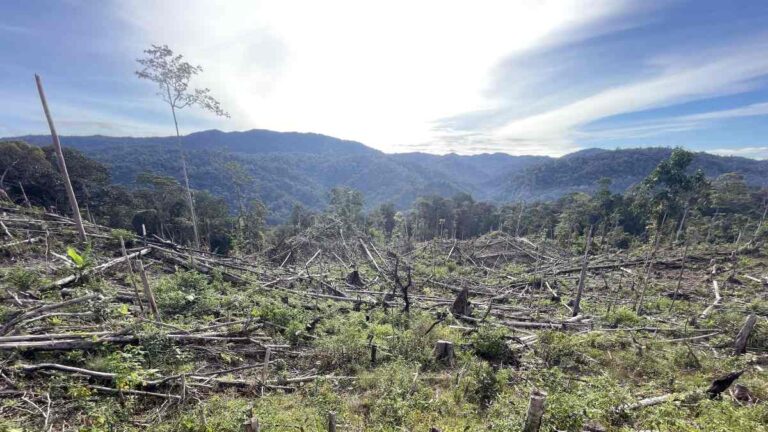A study has found that nearly half of the cleared land in Indonesia is left fallow for more than five years.
Indonesia has lost 25% of its old-growth forests since 1990, and while much of that forest has been converted to other uses, such as palm oil production, U.S. and Indonesian researchers found that 44% of cleared land remains unused for at least five years.
The study is published in Proceedings of the National Academy of Sciences.
“Old-growth rainforests are an extremely valuable resource, both locally and globally,” says Diana Parker, a postdoctoral researcher in the Department of Geographic Sciences at the University of Maryland, US.
“The fact that such a large area of ancient forest was cleared and left empty is surprising.”
Researchers used satellite data to track forest cover in Indonesia from 1991 to 2020.
They found that while 7.8 million hectares of cleared forest had been planted with oil palm in 2020, 8.8 million hectares of land remained unused.
Many researchers have hypothesized that wildfires are the primary source of land clearing.
But this study found that although fires are a major source of deforestation, 54% of the land was cleared mechanically.
“Wildfires can be intentional or accidental,” Parker says.
“Mechanical clearing is not only intentional, it can also be time-consuming and expensive. Once we realized that more than half of the vacant land was not the result of fire, a new question arose: Why do people go to such great lengths to clear forests and leave the land empty?”
Nor was demand for timber a determining factor: most forests had been selectively logged before being cleared, and cleared land tended to be more expensive than uncleared land.
Instead, researchers believe the clearing is linked to speculation in palm oil. Palm oil, extracted from oil palms that grow only in the tropics, is a widely used food ingredient that is also used in cosmetics, biofuels and other industries. Planting the lucrative crop has been heavily criticized for its links to deforestation.
While other uses, such as other tree plantations, began immediately after an area was deforested, the majority of oil palm plantations were delayed by at least a year.
“About 80 percent of the mechanically cleared wasteland converted to productive use has become oil palm plantations,” Parker says.
Researchers suggest that land speculation and exploitation of natural resources in the palm oil industry, as well as the eventual failure of oil palm plantations, could be a significant cause of this seemingly unnecessary deforestation.
“Satellite imagery can’t tell us exactly what the link is between wasteland creation and the palm oil industry, but land use trends suggest a relationship,” Parker says.
“In some cases, companies or individuals may intend to sell deforested land, but they are waiting for land prices to increase. They may also plan to exploit it later and keep it as part of their land bank.
“In other cases, seedlings may have died before being detected on satellite imagery, or conflicts with communities or other concessionaires may have delayed planting.”
The researchers say there is reason to be optimistic about this. The study, which covers the period 1991-2020, found that deforestation rates were at their lowest in 2017-20, at the end of the study period. Already-cleared land could be one factor.
“Indonesia is one of the few countries with tropical forests that has successfully slowed deforestation,” says lead author Matthew Hansen, a professor at the University of Maryland.
“Given the amount of uncultivated land currently available, Indonesia could stop clearing forests altogether while increasing palm oil production.”


